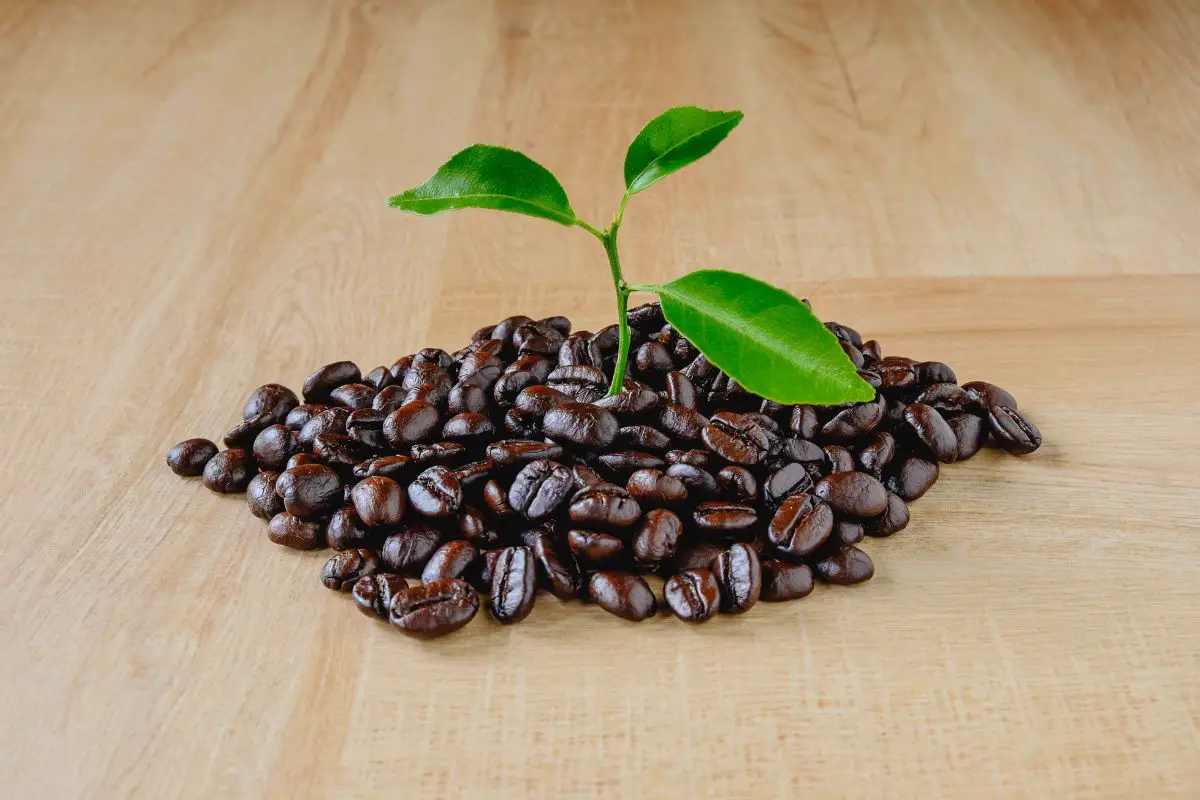Coffee is among the most preferred beverages in the world. One of the reasons that make it a popular drink worldwide is that it has more caffeine content than other natural caffeine sources like cocoa and tea. Besides, it offers numerous health benefits.

Essentially, coffee is brewed from ground coffee beans. But how are coffee beans grown? In this article, we will answer this question in detail to help you understand the journey it takes for coffee beans to get into your morning cup of coffee.
The Origin of Coffee Beans
To help you understand what coffee beans are in detail, we will briefly discuss their origin and how they spread throughout the world. Generally, coffee beans are the seeds found inside coffee cherries. Coffee cherries are fruits harvested from coffee plants.
It is believed that coffee plants were first discovered by an Ethiopian goat herder by the name Kaldi. Most coffee historians agree that coffee plants started growing in Ethiopia. They gradually spread to other coffee-growing regions such as Yemen, Southeast Asia, East Africa, South America, Central America, and the Caribbean. The region where coffee is grown is known as the bean belt/coffee belt. T
Today, coffee beans are sourced from many coffee farms around the world. Some of the top coffee-producing countries are Brazil, Ethiopia, Indonesia, Colombia, Vietnam, and Kenya. Brazil boasts of being the world’s top coffee producer.
The Coffee Plant
Since the time coffee spread throughout the world, it has evolved tremendously. Coffee plants evolve depending on the environmental conditions of the area they are grown. That is why there are many varieties of coffee beans available on the market today.
While there are many varieties of coffee plants today, the most common ones are Coffea Robusta and Coffea Arabica. To start with, Robusta coffee beans are suitable for brewing coffee with long, earthy tones. Although Robusta coffee starts off boldly with a bit bitter and grainy taste, it leaves you with a smooth finish. It tastes more like peanut butter.
On the other hand, Arabica beans are ideal for coffee lovers who dislike the sharp and harsh taste of Robusta beans. Arabica beans brew coffee with a sweeter and softer taste, thanks to its notes of sugar. Arabica coffee often tastes like fruits due to its lower acidity.
So How Are Coffee Beans Grown?
Coffee beans are found inside coffee cherries. Coffee cherries are produced by coffee plants. If left unprocessed, coffee beans can be planted, germinate, and grow into mature coffee plants. It takes about two to four years for a young coffee plant to start producing coffee cherries that are ripe enough for harvesting. When grown under the right conditions, coffee plants grow 6 to 15 feet tall.
Growing coffee beans start with planting coffee seeds. Typically, the seeds are planted in very large beds. The beds are shaded to allow for optimal growth. Once the seeds germinate and sprout, they form seedlings. The seedlings are allowed to grow for some days before transplanting. When transplanting, they are moved to individual pots containing carefully formulated soils to allow for the best growth.
Potted coffee seedlings are also shaded, which protects them from scorching sun that can otherwise dry them out. Watering is done frequently until the seedlings are vigorous enough for transplanting into the farm where they will grow permanently.
Planting coffee seeds is best done during the rainy season. The reason behind this is that the soil remains moist enough for the roots to get firmly established. When planting the seedlings on a permanent farm location, it is best to ensure the plants are facing east slopes where the sun is only likely to shine in the morning. Additionally, hardy varietals are more preferred for planting.
As coffee plants grow and mature, they flower and undergo pollination. Arabica coffee trees are self-pollinating whereas Robusta plants are not self-pollinating. With self-pollination, the harvested beans have uniform properties, which makes single-origin Arabica coffee beans superior in quality when compared to Robusta beans. Robusta beans from a single tree tend to have more variation, hence lower quality.
Harvesting Coffee Beans
It takes about 3 to 4 years for coffee plants to bear fruit depending on the variety in question. Coffee fruits, or cherries, are green when developing. They turn red or yellow when ripe. The cherries ripen at a faster rate under higher temperatures and lower altitudes.
Harvesting coffee is often done by hand. Picking the cherries by hand ensures only ripe cherries are harvested. Thus, hand-picking is labor-intensive. Laborers are often hired during the harvesting season. Typically, the periods at which cherries mature differ. There can be about three pickings to clear a coffee farm.
However, machine harvesting is often used on large coffee farms, especially where the land is flat like in most Brazilian coffee farms. Harvesting by machine is quite impossible on sloped coffee farms. Whether coffee is harvested by hand or by machine, harvesting is either done by selective picking or strip picking.
With selective picking, red cherries are picked while green cherries are left on the trees to ripen. Selective picking is done by hand at an interval of 10 days. Arabica beans are often harvested by selective picking to allow for the best quality of coffee beans. On the other hand, strip picking involves stripping a coffee branch of all the cherries either by machine or by hand.
Conclusion
Hopefully, we have answered your question on how are coffee beans grown. Today, coffee beans are sourced from many coffee-growing countries. Coffee beans are the seeds inside coffee berries. After harvesting, the cherries are processed by removing the layers of skin covering the seeds. The green seeds are roasted into the brown coffee beans you buy from your local grocery store or online.
Also read Where Are Coffee Beans Grown?